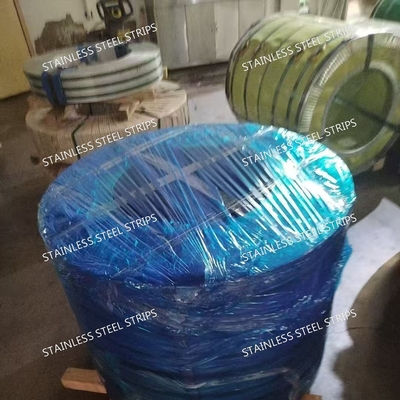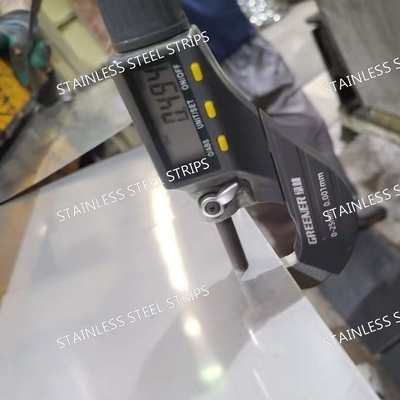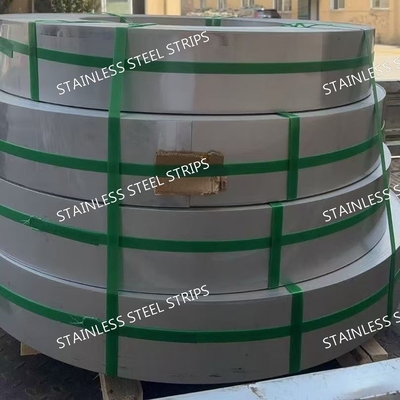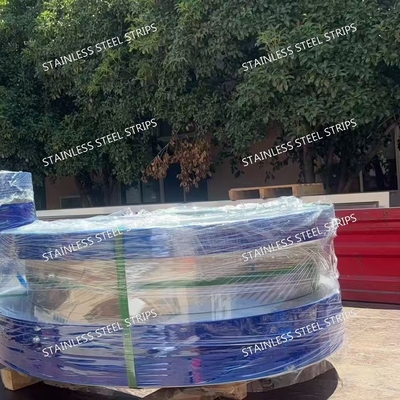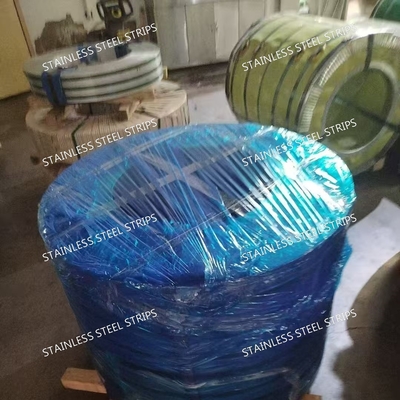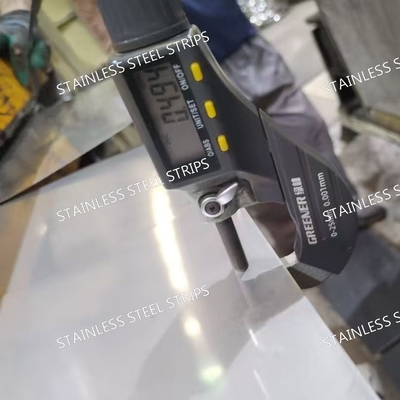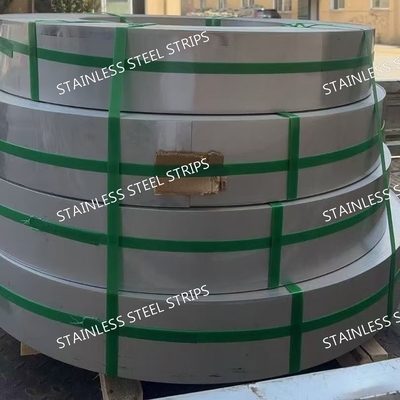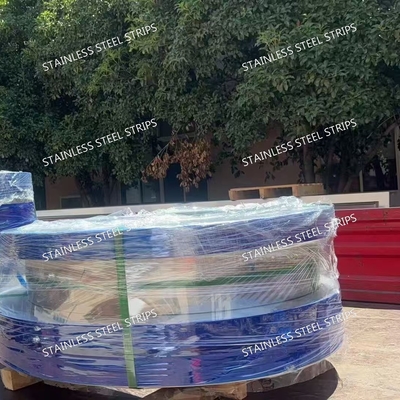-
 Raian IonescuMaterial quality very good. we have cooperate more than 10 Years. They trade lots kinds of steel material. All material quality good. They duty for all material quality. We are planing continue cooperate with them in the future
Raian IonescuMaterial quality very good. we have cooperate more than 10 Years. They trade lots kinds of steel material. All material quality good. They duty for all material quality. We are planing continue cooperate with them in the future
Slit Cutting Stainless Steel Strips JIS G4305 SUS304/SUS304L/SUS304H Stainless Steel Coils
| Place of Origin | China |
|---|---|
| Brand Name | TISCO |
| Certification | ISO |
| Model Number | 300 Series / 400 Series |
| Minimum Order Quantity | 2 Ton |
| Price | 1500-2500 USD/Ton |
| Packaging Details | standard packing for export |
| Delivery Time | 5 - 12 days based on the quantity |
| Payment Terms | L/C, T/T, Western Union |
| Supply Ability | 20Ton per week |

Contact me for free samples and coupons.
Whatsapp:0086 18588475571
Wechat: 0086 18588475571
Skype: sales10@aixton.com
If you have any concern, we provide 24-hour online help.
x| Products | Stainless Steel Strip | Thickness | 0.5-8.0mm |
|---|---|---|---|
| Width | Within 1500mm | MOQ | 500 Kgs |
| Grade | 200 Series 300 Series 300 Series | Surface | BA 2B NO.4 HL 8K NO.1 |
| Standard | ASTM EN GB JIS | Packing | Wooden Frame And Water Proof Paper |
| Highlight | JIS G4305 Stainless Steel Strips,SUS304L Stainless Steel Strips,SUS304 Stainless Steel Strips |
||
Slit Cutting Stainless Steel Strips JIS G4305 SUS304/SUS304L/SUS304H Stainless Steel Coils
Products Specification
| Product Name | Stainless Steel Strips |
| Length | As required |
| Width | 3mm-1219mm or as required |
| Thickness | 0.15 - 3.0mm or as required |
| Standard | AISI,ASTM,DIN,JIS,GB,JIS,SUS,EN,etc. |
| Technique | Hot rolled / cold rolled |
| Surface Treatment | 2B or according to customer requirement |
| Thickness tolerance | ±0.01mm |
| Material | 201, 202, 301, 302, 303, 304, 304L, 304H, 310S, 316, 316L, 317L, 321,310S 309S, 410, 410S,420, 430, 431,434, 440A,904L,2205,2507 |
| Application | It is widely used in high temperature applications, medical devices, building materials, chemistry, food industry, agriculture, ship components.It also applies to food, beverage packaging, kitchen supplies, trains, aircraft, conveyor belts, vehicles, bolts, nuts, springs, and screen. |
| MOQ | 1tons.We also can accept sample order. |
| Shipment time | Within 15-20 workdays after receiving deposit or L/C |
| Export packing | Waterproof paper, and steel strip packed.Standard Export Seaworthy Package.Suit for all kinds of transport,or as required |
| Capacity | 250,000 tons/year |
Understanding the nuances between 304, 304L, and 304H stainless steel strip is crucial for engineers, designers, and procurement specialists. While all belong to the ubiquitous austenitic 18-8 (18% Chromium, 8% Nickel) family, subtle differences in composition, especially carbon content, dictate their optimal performance in various environments. Choosing the right grade impacts weldability, corrosion resistance, high-temperature strength, cost, and overall project success.
Core Similarities: The 304 Foundation
All three grades share the fundamental characteristics that make Type 304 stainless steel the world's most widely used:
-
Composition Base: Primarily Iron (Fe), Chromium (~18%) for corrosion resistance, Nickel (~8%) for austenitic structure and formability.
-
Excellent Corrosion Resistance: Strong resistance to a wide range of atmospheric environments, many organic and inorganic chemicals, and food processing media. Resists oxidation up to ~870°C (1600°F).
-
Good Formability & Fabrication: Easily welded (with considerations, see below), formed, drawn, and machined compared to many other alloys.
-
Non-Magnetic (Typically): Austenitic structure is generally non-magnetic in the annealed condition. Slight magnetism can occur after cold working.
-
Hygienic & Aesthetic: Easy to clean, readily polished, making them ideal for food & beverage, pharmaceutical, architectural, and consumer goods.
The Critical Difference: Carbon Content
The key differentiator lies in their carbon (C) levels:
-
304 (Standard): Carbon max ~0.08%. The baseline, general-purpose grade.
-
304L (Low Carbon): Carbon max ~0.030%. Designed for superior weldability and to resist "sensitization."
-
304H (High Carbon): Carbon min ~0.04% and max ~0.10%, with tighter controls. Designed for enhanced high-temperature strength.
Grade by Grade Characteristics
1. 304 Stainless Steel Strip (UNS S30400)
-
The Workhorse: The standard, most commonly specified grade.
-
Carbon: ≤ 0.08%.
-
Strengths: Excellent all-around corrosion resistance, good formability and weldability for general applications, readily available, cost-effective.
-
Weldability: Good, but susceptible to sensitization in the heat-affected zone (HAZ) around welds if cooled slowly through 425-815°C (800-1500°F). This allows chromium carbides to form at grain boundaries, depleting chromium locally and reducing corrosion resistance.
-
Best For: General corrosion resistance applications not involving heavy welding or extreme sustained high temperatures. Examples: Tanks, containers, kitchen equipment, architectural trim, fasteners, general hardware, automotive trim.
2. 304L Stainless Steel Strip (UNS S30403)
-
The Welding Specialist: "L" stands for "Low Carbon."
-
Carbon: ≤ 0.030% (significantly lower than standard 304).
-
Strengths: Superior resistance to sensitization during welding due to minimal carbon available to form chromium carbides. Excellent corrosion resistance in welded structures, especially in environments prone to intergranular corrosion. Maintains good formability.
-
Trade-off: Slightly lower yield and tensile strength at room temperature compared to standard 304 (due to lower carbon). This difference diminishes at elevated temperatures.
-
Best For: Applications requiring extensive welding where post-weld heat treatment isn't feasible or desired. Ideal for: Chemical processing equipment (tanks, piping), pharmaceutical/biotech equipment, heat exchangers (shells/tubes in certain services), welded architectural components exposed to corrosive atmospheres, food processing equipment with welded seams.
3. 304H Stainless Steel Strip (UNS S30409)
-
The High-Temperature Performer: "H" stands for "High Temperature."
-
Carbon: 0.04% - 0.10% (minimum carbon is specified and controlled, unlike standard 304).
-
Strengths: Significantly higher elevated temperature strength, particularly creep strength and stress rupture strength compared to 304/304L. This is due to the controlled higher carbon content and often tighter overall chemistry controls. Compliant with ASME Boiler and Pressure Vessel Code requirements for high-temperature service.
-
Trade-offs: More susceptible to sensitization than 304L (similar to standard 304) due to higher carbon. Requires solution annealing after welding for critical corrosion applications. Slightly less formable than 304L.
-
Best For: Applications involving sustained exposure to high temperatures (typically above ~525°C / 1000°F). Essential for: Boiler tubes, superheater tubes, heat exchanger tubing and shells in high-temp service, pressure vessels operating at elevated temperatures, furnace parts, burner components, flue gas ducting.
Comparison Tables
Table 1: Key Chemical Composition Differences (Typical Ranges - ASTM A240/A480)
| Element | 304 (S30400) | 304L (S30403) | 304H (S30409) | Primary Impact |
|---|---|---|---|---|
| Carbon (C) | ≤ 0.08% | ≤ 0.030% | 0.04-0.10% | Weldability/Sensitization, High-Temp Strength |
| Chromium (Cr) | 18.0 - 20.0% | 18.0 - 20.0% | 18.0 - 20.0% | Corrosion Resistance |
| Nickel (Ni) | 8.0 - 10.5% | 8.0 - 12.0% | 8.0 - 10.5% | Austenite Stability, Formability |
| Manganese (Mn) | ≤ 2.00% | ≤ 2.00% | ≤ 2.00% | Austenite Stability, Work Hardening |
| Silicon (Si) | ≤ 0.75% | ≤ 0.75% | ≤ 0.75% | Deoxidation, Strength |
| Phosphorus (P) | ≤ 0.045% | ≤ 0.045% | ≤ 0.045% | |
| Sulfur (S) | ≤ 0.030% | ≤ 0.030% | ≤ 0.030% | Machinability |
| Nitrogen (N) | ≤ 0.10% | ≤ 0.10% | ≤ 0.10% | Strength (esp. yield) |
Table 2: Key Mechanical & Performance Properties (Annealed Condition - Typical)
| Property | 304 (S30400) | 304L (S30403) | 304H (S30409) | Notes |
|---|---|---|---|---|
| Tensile Strength (MPa) | 515 min | 485 min | 515 min | 304L slightly lower RT strength. H similar min to 304. |
| Yield Strength (0.2% Offset, MPa) | 205 min | 170 min | 205 min | 304L has significantly lower RT yield strength. H similar min to 304. |
| Elongation (% in 50mm) | 40 min | 40 min | 40 min | All exhibit excellent ductility. |
| Hardness (Rockwell B) | 92 max | 92 max | 92 max | |
| Density (g/cm³) | ~7.93 | ~7.93 | ~7.93 | |
| Melting Range (°C) | 1400 - 1450 | 1400 - 1450 | 1400 - 1450 | |
| Weldability | Good | Excellent | Good | 304L best resists sensitization. 304/304H require care/annealing. |
| Sensitization Resistance | Moderate | High | Moderate | Directly related to carbon content. |
| High-Temp Strength (Creep) | Good (up to ~525°C) | Good (up to ~525°C) | Excellent (>525°C) | 304H specifically designed for sustained high-temp service. |
| Typical Availability (Strip) | Widest Range | Very Wide | Wide (Less than 304/304L) | |
| Relative Cost (Guide) | $ (Base) | $$ (Slight Premium) | $$ (Slight Premium) | Depends on quantity, dimensions, mill, market. H often similar to L. |
Choosing the Right Grade: Application Focus
-
Prioritize Weldability & Corrosion in Welds? Choose 304L. Essential for heavily welded fabrications exposed to corrosive environments without post-weld heat treatment.
-
General Purpose, Non-Extreme Welding, Cost-Effective? Choose 304. The standard choice for a vast array of applications without sustained high heat or critical welding needs.
-
Prioritize High-Temperature Strength (>525°C / 1000°F)? Choose 304H. Mandatory for ASME pressure vessel code compliance and performance in high-heat applications like boilers and superheaters. Post-weld annealing is often required for corrosion resistance.
![]()
![]()
![]()
![]()



